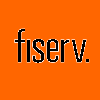Overall, Fiserv showcases a strong business model supported by solid financial performance and a unique integrated offering. Future growth prospects are promising, but economic dependencies pose potential challenges.


 Strong Market Position
Strong Market Position
 Healthy Profit Margins
Healthy Profit Margins
 Satisfactory Return on Equity
Satisfactory Return on Equity
 Manageable Debt Levels
Manageable Debt Levels
 Adequate Liquidity Ratios
Adequate Liquidity Ratios
 🏆 Strong Financial Performance
🏆 Strong Financial Performance
 🔗 Unique Integrated Solutions
🔗 Unique Integrated Solutions
 🥇 Market Leadership
🥇 Market Leadership
 🚀 Growth Guidance
🚀 Growth Guidance
 🌍 Expansion into New Markets
🌍 Expansion into New Markets
 🔄 Innovation and Product Development
🔄 Innovation and Product Development
 High Valuation Ratios
High Valuation Ratios
 Operating Profit Margin Concerns
Operating Profit Margin Concerns
 Low Cash Reserves
Low Cash Reserves
 ⚠️ Dependency on Economic Conditions
⚠️ Dependency on Economic Conditions
Overall, Fiserv showcases a strong business model supported by solid financial performance and a unique integrated offering. Future growth prospects are promising, but economic dependencies pose potential challenges.
Analysis Date: February 5, 2025
Last Updated: March 12, 2025
Trailing Twelve Months (TTM) values provide a view of the company's performance over the last year.
Benjamin Graham's value investing approach focuses on finding stocks with a significant margin of safety between their intrinsic value and market price.
Intrinsic Value
Estimated fair value based on Graham's formula
$210.96
Current Market Price: $194.14
IV/P Ratio: 1.09x (>1.0 indicates undervalued)
Margin of Safety
Gap between intrinsic value and market price
8.0%
Graham recommended a minimum of 20-30% margin of safety
Higher values indicate a greater potential discount to fair value
Graham Criteria Checklist
Benjamin Graham's value investing checklist for FI
 Positive earnings (5+ years)
Positive earnings (5+ years)
 Dividend history (5+ years)
Dividend history (5+ years)
 P/E ratio ≤ 20 (36.24)
P/E ratio ≤ 20 (36.24)
 P/B ratio ≤ 1.5 (4.19)
P/B ratio ≤ 1.5 (4.19)
 Current ratio ≥ 2.0 (1.06x)
Current ratio ≥ 2.0 (1.06x)
 Long-term debt < Net current assets (17.98x)
Long-term debt < Net current assets (17.98x)
 Margin of safety (8.0%)
Margin of safety (8.0%)
 FI does not meet all Graham criteria
FI does not meet all Graham criteria
Trailing Twelve Months (TTM) values provide a view of the company's performance over the last year.
Gross profit margin of 60.81% and net profit margin of 15.31% indicate strong efficiency in converting sales into actual profit.
A return on equity of 11.20% shows that the company is effectively generating profits from its equity base.
An operating profit margin of 28.73% is respectable but could be improved, indicating potential inefficiencies in operations.
Profitability metrics measure a company's ability to generate earnings relative to its revenue, operating costs, and other relevant metrics. Higher values generally indicate better performance.
Return on Equity (ROE)
Measures how efficiently a company uses its equity to generate profits
11.20%
Higher values indicate better returns for shareholders
TTM (as of 2025-04-16)
Return on Assets (ROA)
Measures how efficiently a company uses its assets to generate profits
1.22%
Higher values indicate better asset utilization
TTM (as of 2025-04-16)
Gross Profit Margin
Percentage of revenue retained after accounting for cost of goods sold
60.81%
Higher values indicate better efficiency in production
TTM (as of 2025-04-16)
Net Profit Margin
Percentage of revenue retained after accounting for all expenses
15.31%
Higher values indicate better overall profitability
TTM (as of 2025-04-16)
A debt-to-equity ratio of 0.92 suggests that the company is using a balanced amount of debt in its capital structure, which is manageable.
Current and quick ratios of 1.06 indicate that the company has just enough liquidity to meet its short-term obligations.
With a cash ratio of only 0.06, the company may face challenges in covering short-term liabilities without relying on cash flow.
Financial health metrics assess a company's ability to meet its financial obligations and its overall financial stability.
Debt to Equity Ratio
Total debt divided by total equity
0.90x
Lower values indicate less financial leverage and risk
Less than 1.0 is conservative, 1.0-2.0 is moderate, >2.0 indicates high risk
Q4 2024
Current Ratio
Current assets divided by current liabilities
1.06x
Higher values indicate better short-term liquidity
Less than 1.0 is concerning, 1.0-2.0 is adequate, greater than 2.0 is good
Q4 2024
Fiserv demonstrated strong financial metrics with an adjusted EPS growth of 17% to $8.80, organic revenue growth of 16%, and an operating margin expansion of 170 basis points to 39.4%. The robust free cash flow of $5.2 billion indicates effective cash management.
Fiserv's ability to offer a comprehensive suite of products across merchant and financial solutions positions it uniquely in the market. The introduction of Cash Flow Central and the Clover suite leverages strong synergies across its business lines.
Fiserv's leadership position in the embedded finance space was reinforced by partnerships with major players like DoorDash and ADP, enhancing its service offerings and market share in small business solutions.
For 2025, Fiserv projected an organic revenue growth of 10% to 12% and an adjusted EPS growth of 15% to 17%. This optimistic guidance reflects confidence in the company's growth strategies and market conditions.
Fiserv's entrance into new countries such as Brazil, Mexico, and Australia, along with the launch of new product offerings, indicates significant growth opportunities in untapped markets.
The ongoing development of integrated solutions, including Cash Flow Central and Clover enhancements, showcases Fiserv's commitment to innovation and meeting evolving customer needs.
The performance of Fiserv's financial solutions is influenced by external economic factors, including inflation and currency fluctuations, particularly in Argentina, which could impact future earnings.